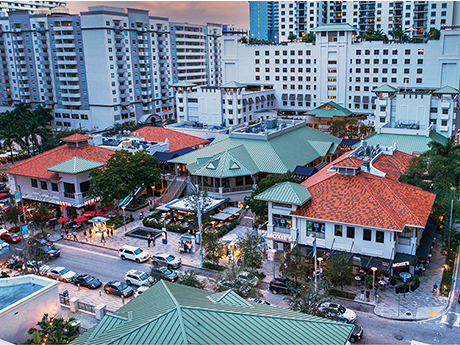Even a hurricane that hits far away impacts local housing markets, FIU Business research finds | FIU News
Even when a hurricane is far away, it raises homeowners’ perception of risk, yet the financial impact and homeowners’ attention to flooding probabilities are short-lived, research from FIU Business shows.
Researchers examined the impact of Hurricane Sandy – the deadliest, most destructive storm of the 2012 Atlantic hurricane season – on the housing market in Miami-Dade County, specifically on property values.
“Miami-Dade is very vulnerable in the case of major storms,” said Lu Fang, assistant professor in the Hollo School of Real Estate. “When people buy a house or make real estate investments, they must keep in mind whether their property is exposed to high flood risk.”
The study, forthcoming in the Journal of Real Estate Finance and Economics, looked at transactions of single-family houses between January 2005 and December 2014.
It revealed that in 2005 after a series of direct storms in 2004 and 2005, homebuyers in Miami-Dade placed a price discount of approximately 4% on single-family properties in high flood risk zones, based on RealtyTrac data from residential real estate transactions in Miami-Dade County. By contrast, during quiet hurricane seasons properties within high flood hazard zones commanded a 4% to 6% price premium.
Why was Miami-Dade selected as the county for the study?
It’s a largely coastal county with a significant portion of properties with high flood risk exposure and located in an area of high hurricane traffic. Additionally, between 2006 and the end of the sample period none of the most severe hurricanes to impact the U.S. struck Miami-Dade directly but caused severe damages to other states or areas of Florida.
“It’s not surprising because properties in high flood risk zones are usually near the ocean, rivers or lakes enjoying those water-related amenities and are more expensive,” said Fang. “After Sandy that premium disappeared; home sale prices in high flood risk zones dropped more significantly compared to houses in low flood risk zones.”
Hurricane Sandy’s attack on the U.S. East Coast caused many in Miami-Dade to take notice of flood risks in their neighborhoods. Those living near the coastline rapidly increased their awareness of flooding, whereas those with homes farther inland didn’t. Researchers tracked the intensity of weekly Google trend searches of keywords associated with hurricanes and flooding to determine this.
“Even though it’s a distant event, because it is destructive, it raises homeowners’ perception of flood risk,” Fang said. “Before Sandy there was a hurricane peaceful period in Miami-Dade and it’s possible that people here and newly relocated to the market may not be aware of flooding risks.”
While a large-scale but distant hurricane like Sandy reshaped home buyers’ perception of flood risk, the focus was short-lived – roughly one-quarter, researchers determined.
“People should always keep an eye on flooding risk in their neighborhoods because it’s very hard to predict what will happen,” Fang said. “What if a major hurricane causes flooding and you don’t have insurance? You have to pay a lot of money.”
The paper was co-authored by Fang with Lingxiao Li of California State University, Fullerton, and Abdullah Yavas at the University of Wisconsin – Madison.



